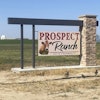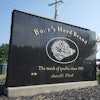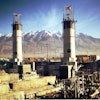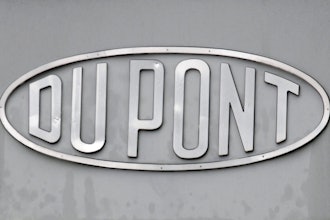
Birdwatching is an activity that fascinates people; it gives avid fans a chance to relax outdoors while watching birds react with each other in their natural habitats. But around your facility, there should be little to no bird activity.
Although some birds are beautiful creatures to watch, others are considered pests that can wreak havoc on your property and products. There are three types of birds in particular that you should discuss with your pest management provider: pigeons, sparrows and starlings. Some facility managers may consider these animals to be simply a nuisance to their property; however, the threats these birds pose are far more serious.
Pigeons, sparrows and starlings can damage the structural integrity of your facility because their droppings harbor acids that can harm machinery and exterior walls, as well as corrode metal. The debris and feathers from bird nests have been known to clog drains and gutters, leaving standing water that is conducive for other pests to breed and thrive. Additionally, to build their nests, birds sometimes bring back items like cigarettes that are still lit, which have caused facility fires in the past.
Aside from causing structural damage to properties, birds can transmit a respiratory illness called Histoplasmosis through their droppings, which can put you and your staff at risk. Molted feathers can also lead to respiratory problems and both feathers and droppings can contaminate packaging and products.
Keep in mind that birds are not simply a nuisance. To prevent property damage, potential product contamination and negative health effects, you should work with a pest management professional to incorporate a bird control strategy into your overall Integrated Pest Management (IPM) program. As with other pest problems, the solution to bird activity should be tailored to the type of birds involved. In fact, the type of bird must be identified before beginning a treatment program because local laws and ordinances can present harsh penalties for harming protected species or disturbing their nests.
Read the following characteristics to learn more about the behavior of these birds so you can work with your pest management provider to prepare the best response.
- Pigeons: Of the three pest birds, pigeons — also known as Rock Doves — are most easily recognized since they abound throughout the country, particularly in urban and suburban areas. One fact that many people do not know, however, is that these birds, their nests and their droppings have been associated with carrying more than 50 diseases that are harmful to humans. Droppings from pigeons are often carried into facilities via foot traffic, due to their tendency to gather in large groups and foul sidewalks and outdoor break areas. This can have a strong influence on the health and well-being of employees. Additionally, pigeons will consume human food, garbage and animal matter if necessary to survive, rather than sticking to their typical grain, seed and fruit diet. As a result, they can leave pathogens behind wherever they are feeding.
- Sparrows: These birds are also common throughout the country, and they are affiliated with more than 30 diseases. Sparrows breed quickly and more frequently than most other bird species, so if you spot one of their nests, it’s important that you respond immediately. They prefer to nest near, on or in buildings that provide protected areas for their brood. Ranging from brown to dark brown, these small birds also leave droppings that can deface a facility’s pavement and walls.
- Starlings: Similar to pigeons and sparrows, starlings are also known to carry disease organisms, including more than 25 diseases that are harmful to humans. They are approximately 8 to 9 inches long with a wingspan of 12 to 16 inches, and have purple-green feathers. The color of their bills changes from yellow in warm weather to blue-black in cool weather, and they tend to gather in large roosting flocks. Like sparrows, they tend to take up residence protected areas near, on or in buildings, especially in concealed locations that are not as visible to the eye.
No matter what type of birds you find on your property, they are likely gathering for one of four reasons. Look out for the following activity near bird “hot spots” at your facility, including outdoor break areas, ledges and roofs.
- Feeding: Birds need food and water to survive, and will look for these resources at your facility. Be sure to remove all food debris that may be on the ground, and work to eliminate accumulations of standing water near hose bibs and in waste handling areas. Roof-top HVAC units are popular areas for birds to find standing water, as these units often leak or “perspire.”
- Nesting and Breeding: There are plenty of areas at food processing facilities — like ledges, rafters, beams or nooks and crannies on rooftops — that birds will find attractive as nesting sites to raise their young. Keep in mind that when birds begin nesting on your property, the nests present a challenge for facility managers and pest management professionals as these must be completely removed in a safe and ethical manner.
- Socializing and Loafing: While some birds may be attracted to you property for feeding and nesting, others may stop by for no other reason than to socialize with each other. Since these birds aren’t yet permanently tied to the property, they can more easily be repelled or relocated based on your pest management professional’s advice.
- Roosting: Roosting happens when birds are looking for a place to sleep. Pest birds, including pigeons, prefer to roost on flat surfaces and are commonly found sleeping on roof ledges. Contrary to birds that are simply socializing, birds that are roosting are not easily deterred by repellants or relocation tactics.
Work with your pest management professional to determine the species of bird and the reason they are congregating at your facility. Afterward, your pest management professional will suggest actions to prevent the bird activity, such as installing repellants, relocating the birds and nests or using exclusion tactics like netting that will keep them from accessing areas where they do not belong. If you add a comprehensive bird control program to your IPM program, you’ll continue on the pathway to establishing a strong defense against pests at your facility.
Patrick Copps is Technical Services Manager for Orkin’s Pacific Division. A Board Certified Entomologist in urban and industrial entomology, Mr. Copps has more than 35 years experience in the industry. For more information, email Mr. Copps at [email protected] or visit www.orkincommercial.com.























